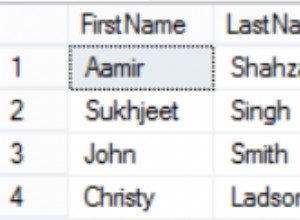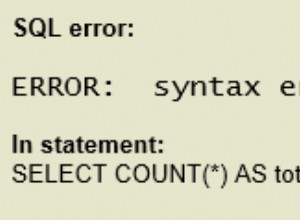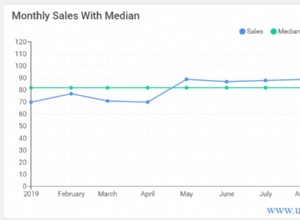Dovresti usare cur.fetchmany() invece. Recupererà un blocco di righe definito da arraysise (256)
Codice Python:
def chunks(cur): # 256
global log, d
while True:
#log.info('Chunk size %s' % cur.arraysize, extra=d)
rows=cur.fetchmany()
if not rows: break;
yield rows
Quindi esegui l'elaborazione in un ciclo for;
for i, chunk in enumerate(chunks(cur)):
for row in chunk:
#Process you rows here
È esattamente come lo faccio nel mio TableHunter per Oracle .




